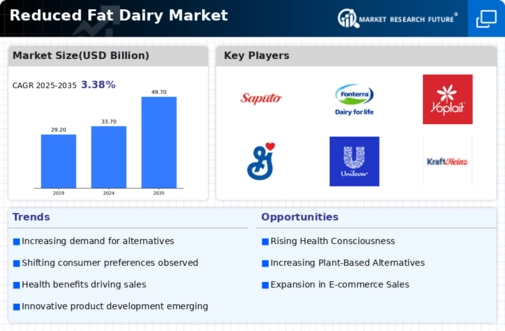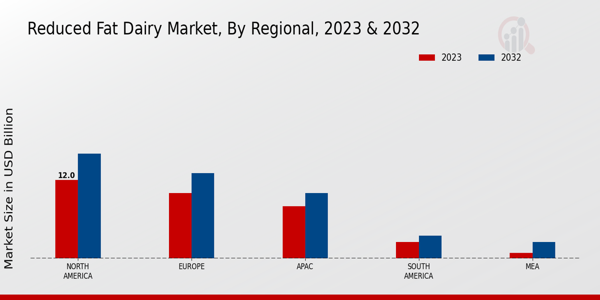The Reduced Fat Dairy Market has witnessed significant growth in recent years, driven by increasing consumer awareness regarding health and wellness. As a result, demand for lower-calorie and reduced-fat dairy options has surged, compelling manufacturers to innovate and diversify their product offerings. This competitive landscape is characterized by a mix of established dairy giants, boutique producers, and emerging players focusing on health-conscious consumers. Factors such as changes in consumer lifestyles, evolving dietary preferences, and the rise of lactose-free and plant-based alternatives contribute to a dynamic and competitive environment in this market.
With a focus on nutritional benefits, sustainable practices, and enhanced flavor profiles, companies are increasingly investing in research and development to capture market share and foster brand loyalty among health-conscious consumers.
Saputo stands out prominently in the Reduced Fat Dairy Market due to its extensive product range and commitment to quality. The company benefits from a robust distribution network that ensures its products reach a broad audience across various regions. Its strong emphasis on maintaining high standards in production allows Saputo to ensure the freshness and nutritional value of its reduced fat dairy products, which resonates well with health-conscious consumers. Furthermore, Saputo's strategic partnerships and acquisitions strengthen its market presence, providing access to new technologies and customer segments.
The brand's reputation for delivering consistent quality helps solidify its position in the reduced fat dairy segment, allowing it to garner customer trust and enhance brand loyalty.
Fonterra is another key player in the Reduced Fat Dairy Market, recognized for its strong focus on innovation and sustainability. With a commitment to creating value through high-quality dairy products, Fonterra offers a diverse portfolio that includes various reduced fat options appealing to health-oriented consumers. The company's advanced production techniques and emphasis on efficient supply chain management enable Fonterra to deliver its products at competitive prices while maintaining exceptional quality. The brand’s footprint, established through strategic partnerships and a strong network of distributors, enhances its ability to meet the rising demand for reduced fat dairy products.
Fonterra’s dedication to research and development provides it with a significant edge in formulating new products that cater to evolving consumer preferences, solidifying its competitive positioning in the market.


























Leave a Comment